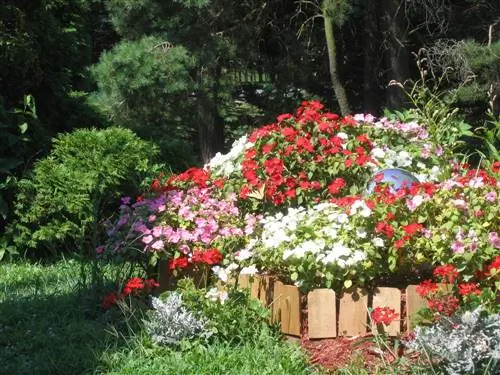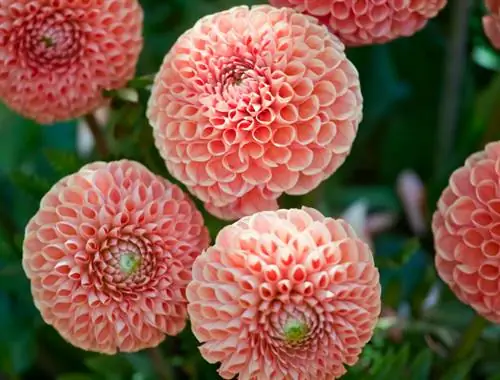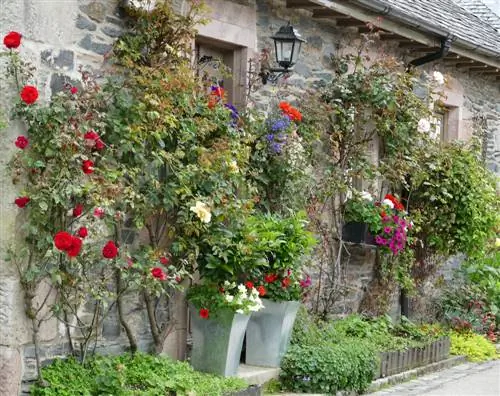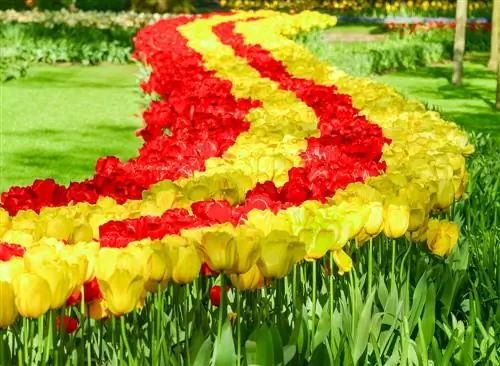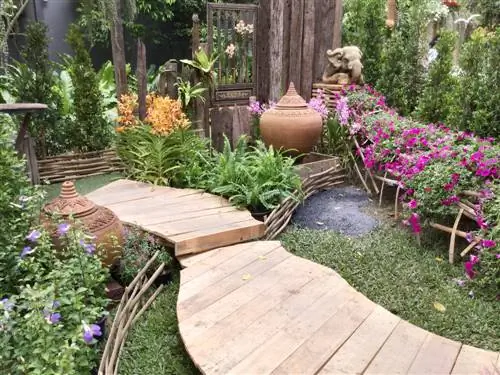- Author admin [email protected].
- Public 2023-12-16 16:46.
- Last modified 2025-01-23 11:21.
So that the flower bed looks attractive and harmonious, careful planning and plant selection is required before the actual planting. With our tips and design ideas, you'll be able to create a beautifully blooming flower bed as an eye-catcher in your garden in no time.
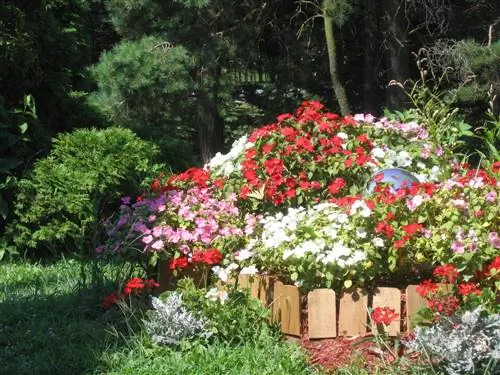
How can I create a harmonious flower bed?
To create an attractive flower bed, combine plants with different flowering times, colors, shapes and heights. Also pay attention to the garden style and insect friendliness to create diversity and harmony in the bed.
Design according to flowering time
One of the most important criteria when choosing plants for a visually beautiful flower bed is the flowering time. So that you can enjoy lush flowers all year round, you should plant perennials and shrubs with different flowering times. Naturally, the selection is greatest in summer, but there are also flowering plants for autumn and even winter. These provide a welcome splash of color in the dreary season. This composition is complemented by evergreen and foliage plants, which make the bed look attractive even outside of the regular flowering times.
| Flowering time | Suitable species |
|---|---|
| Spring | Snowdrops, tulips, daffodils, ranunculus, hyacinths, squills, crocuses |
| Summer | Storksbill, roses, cherries, bluebells, coneflowers, dahlias, delphiniums, gladioli, many annuals |
| Autumn | Chrysanthemums, Stonecrop, Autumn Crocus, Autumn Aster |
| Winter | Christmas rose, witch hazel, winter aconite, winter jasmine, scented snowball |
Design according to colors and shapes
You also have different design ideas when it comes to colors and shapes: flower beds can be planted in one color, for example, pure white, pink or blue flowering beds look exciting as long as you combine plants that grow different heights and widths. In such a bed, the different types of plants create the necessary variety. If monochrome beds are too boring for you, combine two or three colors that harmonize with each other (e.g. B. red and white, red and yellow, blue and yellow, blue and white) or plant a tall perennial of a different color in the middle of a monochrome bed. On the other hand, colorful beds with flowers in different colors look cheerful and never boring. However, always make sure to combine different heights and widths: tall-growing species always belong in the background of the bed and slender, upward-growing flowers should always be flanked by broad, bushy ones.
Design according to garden style
Perhaps you are looking for a specific style that harmonizes with the rest of the garden or best suits your personal taste.
Natural flower bed
If you want to do something good for insects, plant a so-called butterfly border. The small butterflies and other insects such as bees and bumblebees love blue pillows, lavender, heather asters, spur flowers, phlox, candytufts and sedum. A white or purple-flowering lilac looks wonderful as the centerpiece of a larger flower bed. When creating an insect-friendly bed, be careful not to plant semi-double or double flower varieties, as the extra petals often represent an insurmountable obstacle for insects.
Romantic flowerbed
In a romantic flower bed, color and scent are the most important characteristics of the selected plants. The colors should be gentle and soft: pale pink, brown-yellow and white are typically romantic colors. Roses such as the historic Bourbon and Portland varieties are essential in such a bed. Also typical romantic flowers are pansies, ladder to heaven, globeflower, lady's mantle, meadowsweet, clematis, maiden in the green, forget-me-not and memorial. In addition to pastel colors, dark purple and red tones also look enchanting in the romantic flower bed.
Tip
A flower bed does not necessarily have to consist of perennials and shrubs planted in a specific area. You can also build a potted garden instead, for example on the balcony or terrace. Exotic, non-hardy species also find a place here.

